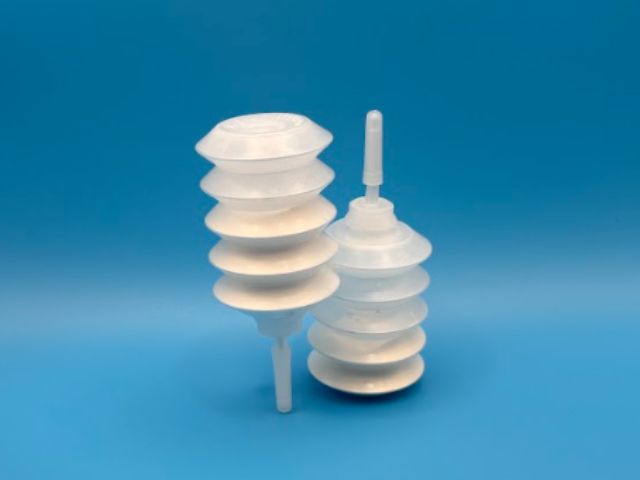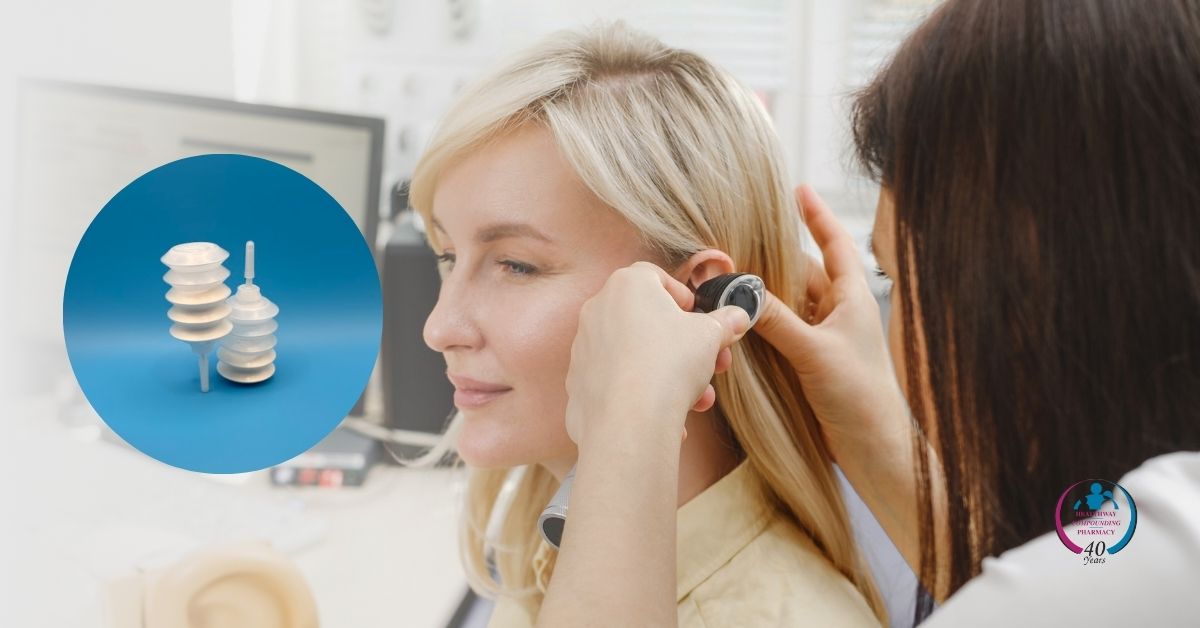Why Michigan ENTs May Choose Ear Puffer Antibiotics for Chronic Otitis Media — And Who Might Benefit

Chronic Suppurative Otitis Media (CSOM) — a persistent middle ear infection marked by ear discharge and tympanic membrane perforation — is a condition frequently encountered by healthcare providers across Michigan.
But in rural and underserved regions north of Saginaw, such as Mount Pleasant, Petoskey, Alpena, Bad Axe, Escanaba, and the Upper Peninsula, managing CSOM or other kinds of ear infections presents unique challenges. Limited access to ENT specialists, long travel distances for follow-up care, and fewer retail pharmacies offering niche therapies often leave primary care providers and urgent care clinics looking for more accessible solutions. That’s where Healthway Compounding Pharmacy of Saginaw, serving these northern Michigan communities, steps in with a customizable option: ear puffer antibiotics.
These compounded medications may offer a practical alternative for managing chronic ear drainage in patients who may not tolerate or respond well to systemic therapies — especially in regions where specialty care is harder to come by.
What Are Ear Puffer Antibiotics?
Ear puffer antibiotics are compounded formulations typically containing an antibiotic powder (such as ciprofloxacin or neomycin), sometimes combined with a drying agent like boric acid. The powder is applied via an otic puffing device or insufflator, which allows the medication to coat the ear canal and middle ear space if the eardrum is perforated.
Unlike systemic therapies that circulate throughout the body, these powders are applied directly to the site of infection. This direct application may allow for greater medication concentration in the localized area, which is one reason this form is being considered more frequently by practitioners treating CSOM.

Who Is Prescribing Ear Puffer Antibiotics?
While ENT specialists are the primary prescribers, other healthcare providers in Michigan’s northern and rural regions are beginning to incorporate ear puffer antibiotics into their health plans.
These include:
- Primary Care Physicians (PCPs) who manage ongoing ear conditions in locations where ENT services are less accessible.
- Pediatricians with patients with frequent or chronic ear infections who may not respond well to repeated courses of oral antibiotics.
- Urgent Care Providers handling acute flare-ups in towns without immediate specialty referral options.
- Geriatric Specialists managing patients with age-related vulnerabilities to systemic medications.
- Audiologists, in collaboration with medical professionals, may suggest ear puffer use to support hearing device use in patients with persistent discharge.
Compounding pharmacies such as Healthway Compounding Pharmacy in Saginaw work closely with these prescribers to create individualized health plans that may better suit specific patient needs.
Which Patients May Benefit From This Approach?
Certain patient populations may potentially benefit from the use of ear puffer antibiotics:
1. Children with Recurrent Ear Infections
In children with recurring otorrhea due to tympanic membrane perforation or previous surgeries, topical powders may be an alternative to repeated oral antibiotic use. The potential for fewer systemic side effects makes it an appealing option for pediatric care in communities like Bad Axe and Escanaba.

2. Older Adults with Polypharmacy Risks
Many older adults already take multiple medications. Adding systemic antibiotics can complicate existing regimens or interact with chronic medications. Localized therapies like ear puffers may minimize this risk, especially when compounded to exclude allergens or irritants.
3. Patients Using Hearing Aids or Cochlear Implants
Device users often experience challenges managing drainage, which can damage electronics or cause discomfort. Ear puffers may assist in managing moisture and bacteria locally, supporting longer device functionality and patient comfort.
4. Patients in Remote Areas
Patients in towns like Sault Ste. Marie or Mackinac City may face long wait times or travel barriers to ENT specialists. For these individuals, a topical antibiotic option prescribed by their PCP may be a more accessible medication that still addresses their needs.
5. Those Concerned About Antibiotic Resistance
Localized delivery of antibiotics potentially reduces systemic exposure and may help reduce selection for resistant organisms in the broader body. While not a solution in itself, it may complement stewardship strategies in high-resistance areas.
6. Immunocompromised Patients
For those whose immune systems are weakened by chemotherapy or chronic illness, minimizing systemic antibiotic exposure while maintaining infection control may offer significant benefits. Ear puffers may provide a more controlled way to manage localized infections.
What Are the Potential Advantages of Ear Puffer Antibiotics?
Targeted Drug Delivery
One possible benefit of ear puffers is that they allow medication to concentrate directly at the infection site, which may help when addressing biofilm-producing bacteria — a common characteristic of CSOM. This may enhance the antibacterial activity locally while keeping systemic levels minimal.
Less Systemic Exposure
For patients sensitive to oral antibiotics or who’ve experienced adverse effects in the past, localized therapies may reduce gastrointestinal or allergic reactions. This may be especially relevant in pediatric or geriatric populations.

Improved Patient Compliance
Unlike ear drops, which often require multiple daily doses and precise application, powders can be easier for caregivers and patients to administer. This may improve adherence to health plans and support consistent use over time.
Customization Through Compounding
Healthway Compounding Pharmacy can create ear puffer formulations tailored to individual needs — including specific antibiotic combinations, preservative-free options, or added drying agents for particularly moist ears. This customization helps ensure the medication aligns with both physician intent and patient tolerance.
What Medications are Being Prescribed for Otitis?
Otic Powders for Insufflation include exclusive formulations, each combining several of the following various active ingredients depending on each patient case:
- Amphoteracin B
- Hydrocortisone
- Mupirocin
- Sulfacetamide
- Hydrocortisone
- Gentamycin Sulfate
- Boric Acid
- Fluconazole
Our pharmacists offer personalized guidance to Michigan practitioners in the appropriate prescription to address their patients’ particular needs.
How to Administer Compounded Antibiotics Powder via Ear Puffer (Otic Insufflator)
Michigan’s Expert Inner/Middle Ear Infection Compounding Pharmacy
In Michigan’s metro areas, as well as rural and underserved parts of Michigan, where CSOM may be underdiagnosed or mismanaged due to limited ENT access, ear puffer antibiotics represent a potentially promising therapeutic tool. Practitioners are increasingly exploring this route not only for patient outcomes but also to enhance care quality and accessibility — especially for pediatric, geriatric, and remote-area patients.
As always, consultation with a healthcare provider and individualized patient assessment are key to determining whether this therapy is appropriate. When used thoughtfully, and in collaboration with trusted compounding pharmacy Healthway, ear puffer medications may serve as a valuable addition to Michigan’s arsenal for managing chronic ear conditions.

Patients and practitioners, feel free to reach out today, and our experts will happily guide you through the steps to better health.
References
Ali, M. F., et al. (2013). Antibiotics in chronic suppurative otitis media: A bacteriologic study. Journal of Taibah University Medical Sciences, 8(3), 120-125. https://doi.org/10.1016/j.jtumed.2013.05.003
Cochrane ENT. (2020). Topical antibiotics for chronic suppurative otitis media. Cochrane Database of Systematic Reviews. https://doi.org/10.1002/14651858.CD013051.pub2
Ranjani, S. (2023). Efficacy of combination of acetic acid and ciprofloxacin eardrops in the treatment of chronic suppurative otitis media. The Egyptian Journal of Otolaryngology, 39, Article number: 106. https://doi.org/10.1186/s43163-023-00466-4
Medscape. (2023). Chronic Suppurative Otitis Media Medication: Antibiotics. Retrieved from https://emedicine.medscape.com/article/859501-medication
Singh, R., & Pandey, R. (2024). Bacteriological profile, antibiotic susceptibility, and biofilm formation in chronic suppurative otitis media. International Journal of Pediatric Otorhinolaryngology, 169, 111592. https://doi.org/10.1016/j.ijporl.2024.111592
Verhoeff, M., Van Der Veen, E. L., Rovers, M. M., Sanders, E. A., & Schilder, A. G. (2006). Chronic suppurative otitis media: a review. International journal of pediatric otorhinolaryngology, 70(1), 1-12. Link


